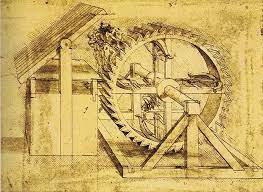 Machine Gun by Leonardo da Vinci Machine Gun by Leonardo da Vinci Looking back at history, the relationship between art and technology has often been reciprocal. During the Renaissance, artists like Leonardo da Vinci were not only masterful painters but also pioneers in various scientific fields. Their artistic pursuits fueled scientific curiosity, and vice versa. Today, as technology influences art, it also mirrors the symbiotic relationship of the past. Art and technology have a long and complex history of influencing each other. From the invention of perspective in the Renaissance to the emergence of digital art in the 21st century, technology has provided artists with new tools, mediums, and possibilities for expression. However, technology also poses some challenges and risks for the artistic community, such as the loss of authenticity, originality, and value. In this blog, I will explore some of the pros and cons of technology for a painter or an artist in general, based on how art in the past drove science to become more enlightened. One of the main advantages of technology for artists is that it enables them to create, share, and access art more easily and efficiently. Technology allows artists to experiment with different techniques, materials, and formats, such as 3D printing, digital painting, and interactive installations. Technology also helps artists to reach a wider and more diverse audience, through online platforms, social media, and digital exhibitions. Technology can also enhance the educational and cultural value of art, by providing information, context, and feedback to the viewers. For example, some museums use augmented reality to display additional details and explanations about the artworks. Another advantage of technology for artists is that it can inspire them to explore new concepts, themes, and perspectives, and to challenge the boundaries of what is considered art. Technology can stimulate the artistic imagination, by offering new sources of data, images, and sounds, and by enabling new forms of collaboration and communication. Technology can also provoke artistic critique, by exposing the social, ethical, and environmental issues of the modern world, and by inviting the viewers to question their own assumptions and values. For example, some artists use artificial intelligence to generate art that reflects the human-machine relationship. However, technology also has some disadvantages for artists, especially when it comes to the quality, originality, and value of their work. Technology can undermine the authenticity and uniqueness of art, by making it easier to copy, reproduce, and manipulate. Technology can also create a sense of detachment and alienation, by reducing the physical and emotional connection between the artist, the artwork, and the viewer. Technology can also devalue art, by creating an oversupply of artworks, and by fostering a culture of consumerism and disposability. For example, some artists struggle to protect their intellectual property rights and to earn a fair income from their digital artworks. Another disadvantage of technology for artists is that it can distract them from their artistic vision, purpose, and identity, and make them dependent on external factors and influences. Technology can tempt the artists to follow the trends, to please the masses, and to compromise their artistic integrity. Technology can also overwhelm the artists, by exposing them to too much information, competition, and criticism, and by creating unrealistic expectations and pressures. Technology can also isolate the artists, by reducing their social and professional interactions, and by creating a gap between them and their traditional peers and mentors. For example, some artists feel that technology has diluted the art, by opening new pathways to art participation and art criticism. In conclusion, technology is a double-edged sword for artists, as it offers both opportunities and challenges. Technology can enhance artistic creativity, expression, and impact, but it can also impair artistic authenticity, originality, and value. Technology can inspire artistic innovation, exploration, and critique, but it can also distract the artistic vision, purpose, and identity. Therefore, artists need to be aware of the pros and cons of technology, and to use it wisely and responsibly, in order to create art that is meaningful, relevant, and valuable.
0 Comments
Leave a Reply. |
Details
about bloomWe are a European/Lebanese run art space in Valencia, Spain. Archives
July 2024
COPYRIGHT NOTICE© Bloom Gallery. Unauthorized use and/or duplication of this material without express and written permission from this site’s author and/or owner is strictly prohibited. Small excerpts and links may be used, provided that full and clear credit is given to Bloom Gallery with appropriate and specific direction to the original content.
|